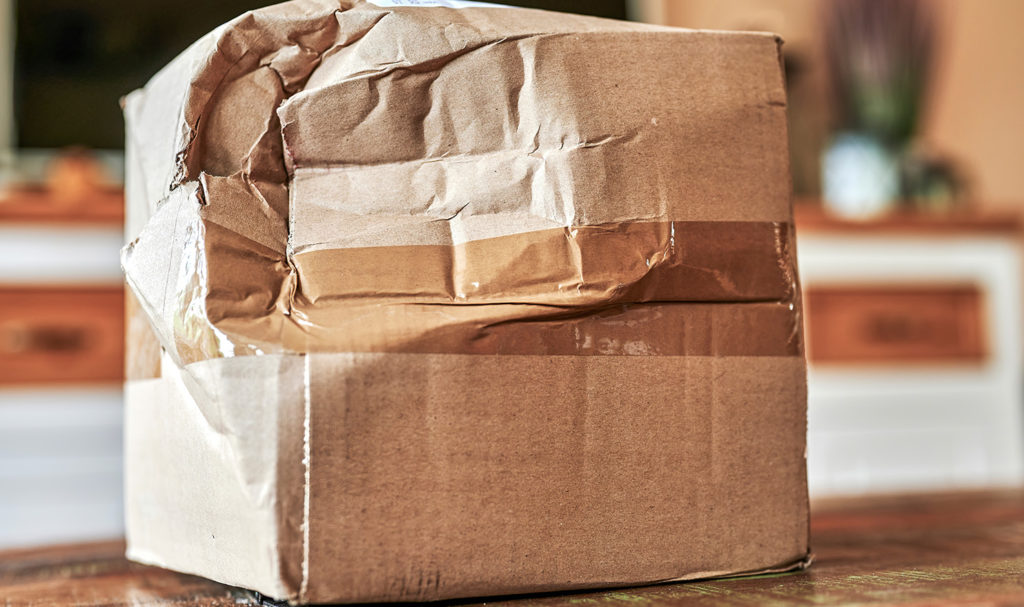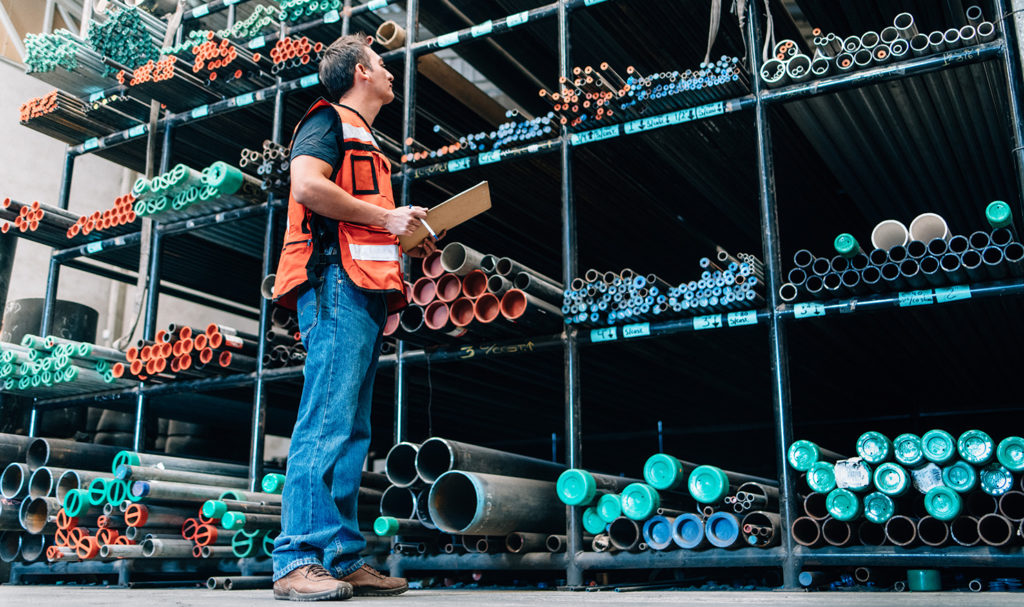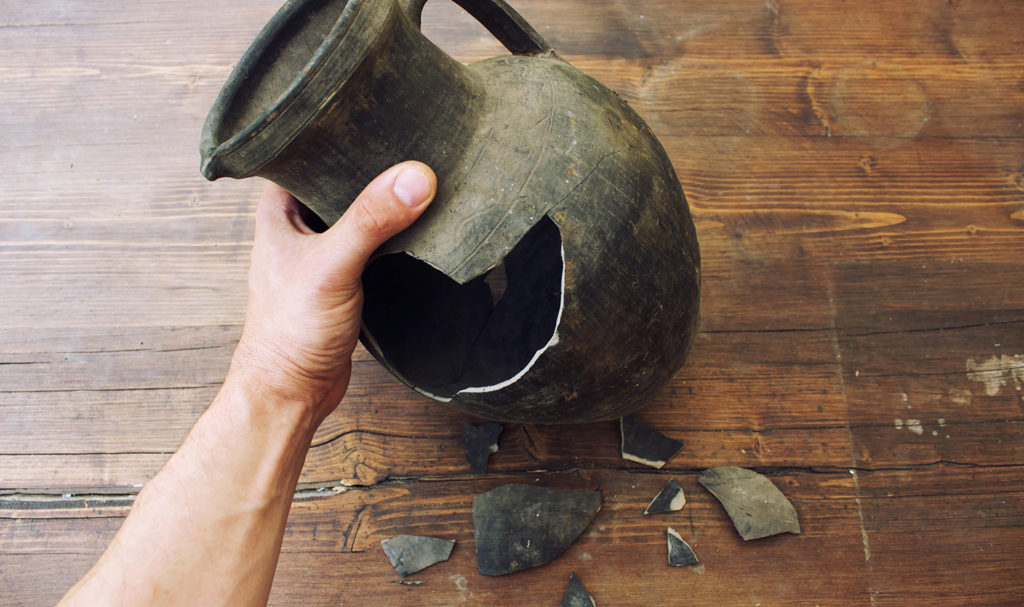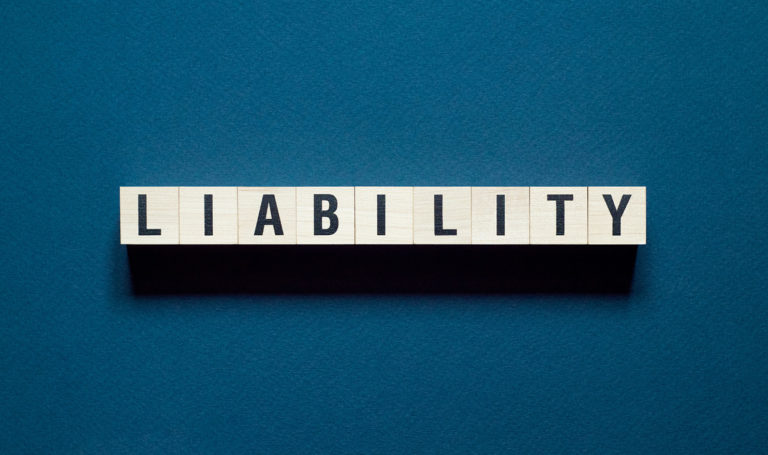- Last Updated:
- 10/30/2024
- Brianna Hale
In our interconnected business world, one mishap can impact hundreds of people like a chain of toppling dominos.
Every entity in the product supply chain, from raw material suppliers to locally owned retail stores, is connected through the products they create and sell. A minor defect in a single component or ingredient can cascade through the supply chain, causing substantial financial and reputational damage.
One person could buy a defective product and sue every business that played a part in making it — even if you aren’t responsible for causing the defect.
The smartest way to protect yourself from threats, lawsuits, and disruptive product claims is to understand your risks and be prepared to cover them with product liability insurance.
What Are Some Common Product Liability Risks?
No two businesses are alike, and neither are their risks. Your product liability risks widely vary based on your industry and the products you handle. Plus, because your products connect you to a chain of other businesses, their risks also become your risks.
Some of the most common risks to look out for are defects that can lead to consumer injuries or damages, such as:
- Manufacturing defects: A defect that occurs during the manufacturing process that causes a product to not perform as intended
- Design defects: A defect caused by poor or insufficient product design, resulting in the product being faulty, unreliable, or unfit for use
- Labeling defects: A defect in the labels, warnings, or instructions for a product (or a lack of these labels) that mislead consumers on proper product safety and use

Who Needs Product Liability Coverage & Why Are They at Risk?
Anyone in the business of making, selling, or even just inventing new products needs product liability coverage — because everyone’s at risk of something going wrong.
This includes:
- Suppliers
- Manufacturers
- Importers
- Distributors
- Wholesalers
- Retailers
- E-commerce
- Online Sellers
Let’s face it, even the best products with the most meticulous testing or the top online seller with the highest ratings are all susceptible to accidents. Nowadays, we often see these accidents quickly escalate into lawsuits.
In fact, 90% of all businesses will experience a lawsuit at some point in their lifespan.
Product liability insurance can help you handle the always-dissatisfied “Karen” customers or the financially motivated “sue-happy Steve” consumers. If a product accident leads to a lawsuit or costly bills needing to be paid on your dime, your insurance is designed to cover these costs.
At first, you might think you are okay taking the risk of your products having a minor defect or mishap at some point. But are you willing to take the risk of a defective product falling into the hands of a “Karen” customer? If that ever happens, your chances of a big dollar lawsuit just went way up…
Aside from lawsuits, a product accident can also lead to repair or replacement costs, medical bills, and even funeral expenses. It could damage your reputation or halt business activities. In some cases, the costs of an accident can force a business to shut down.

What Are Some Ways to Mitigate and Manage Product Liability Risk?
Mitigating and managing product liability risk is essential for all parties involved in the supply chain. Regardless of where your business falls in that chain, you can manage your product liability risk to create a safer environment for yourself, your consumers, and your fellow business owners.
Suppliers
Suppliers of consumer products risk providing faulty or substandard materials that can lead to defective final products. You can manage these risks by:
- Implementing rigorous quality control procedures to ensure raw materials or components meet safety and quality standards
- Obtaining and maintaining relevant industry certifications that validate the safety and compliance of your products
- Maintaining detailed records of batches and shipments to quickly identify and address potential issues
Manufacturers
Manufacturers face the risk of design flaws, assembly errors, or using hazardous materials that can harm consumers. Mitigate your manufacturing risks by:
- Conducting thorough design reviews and product testing to identify and rectify potential hazards before mass production
- Adhering to industry safety standards and regulations during the manufacturing process to decrease the chance of accidents or defects
- Establishing best practices for safety and quality assurance to minimize errors and defects

Importers
Importers carry the risk of bringing non-compliant or unsafe products into the market, potentially leading to legal and safety issues. To lower these types of risks within your importing business, you can:
- Carefully vet foreign suppliers to ensure they comply with international safety and quality standards
- Conduct regular inspections of imported goods to catch any defects or issues before they reach the market
- Stay updated on import regulations and ensuring all products meet the necessary legal requirements
Distributors
Distributors risk handling and transporting products improperly, causing damage or degradation that leads to defects. You can better manage your distributing risks by:
- Developing and enforcing protocols for the safe handling and storage of products to prevent damage
- Keeping comprehensive records of all transactions and product movements to facilitate traceability and accountability
- Including indemnity clauses in contracts with manufacturers to protect against defective products

Wholesalers
Wholesalers face the risk of distributing defective products that can cause harm or require costly recalls. Tips to help manage the risks of your wholesale business include:
- Verifying the quality and safety of products received from manufacturers before distributing them to retailers
- Having a clear and efficient recall plan in place to swiftly address any issues with defective products
- Maintaining robust liability insurance to cover potential claims arising from distributed products
Retailers
Retailers carry the risk of selling products that may have hidden defects, leading to customer injuries or dissatisfaction. To better protect your business and manage your risks, you can:
- Choose reputable suppliers known for high-quality and safe products to minimize risk
- Monitor customer feedback and complaints, and quickly identifying and addressing potential product issues
- Ensure products have clear usage instructions and safety warnings for customers to help reduce misuse and associated risks
E-commerce & Online Sellers
E-commerce businesses and online sellers risk listing and selling unsafe or counterfeit products that can result in liability claims. You can help lower and mitigate your risks by:
- Ensuring accurate and detailed product descriptions, including safety information and usage guidelines
- Implementing policies for reviewing and approving products sold on your site or shop to ensure they meet safety standards
- Offering responsive customer service to handle complaints and issues, and working closely with your suppliers to resolve them

What Role Does Insurance Play With Product Liability Risk Management?
Although insurance is just one piece of the product protection puzzle, it’s one of the best investments you can make for your business.
Insurance allows you to transfer your risks into the hands of an insurance provider, meaning they will assume financial responsibility for covered claims. It also offers you:
- Peace of mind knowing you can be protected against potential claims lets you operate with greater confidence and stability. You can focus on product development and innovation without fear of devastating financial repercussions from potential defects
- Coverage for claims arising from product defects, including medical expenses, legal fees, and compensation for damages
- Financial security by covering the cost of legal representation, court fees, and other associated expenses, preventing severe financial strain or bankruptcy
- Contractual obligation with suppliers, distributors, and retailers who require proof of liability insurance as part of their contracts
Carrying product liability insurance can financially protect what you’ve worked hard to build, keeps you compliant with contracts, and ensures your customers are taken care of.

How Much Does Liability Insurance for Products Cost?
On average, obtaining liability insurance for your products can range anywhere from $500 to $10,000+ a year. This price is based on several factors but is ultimately customized to your exact business and coverage needs.
Over 50% of Insurance Canopy customers pay around $120 a month for product coverage — less than $1,400 a year. This low premium allows you to obtain insurance protection at an affordable rate.
What Impacts the Cost of Product Liability Insurance?
Five main elements that impact the cost of product liability insurance are:
- The type of product(s) you want to insure
- The coverage types and limits you need
- Your insurance claims history
- Your day-to-day business activities
- The risks associated with your industry
How Does the Product Liability Insurance Claims Process Work?
Navigating the product liability insurance claims process might seem daunting, but it’s designed to ensure that businesses and consumers are protected when things go wrong.
The incident occurs – An issue arises with a product, such as a defect, contamination, or mislabeling, leading to consumer harm or property damage.
It’s crucial to notify your insurance company as soon as possible to avoid delays in the claims process.
Promptly notify your insurance provider by filing a claim and providing detailed information about the incident:
- Who was affected
- The nature of the defect
- How it was discovered
- The extent of the damages
- Any witnesses
- Any other supporting documentation (photos, reports, receipts, etc.)
Your claim will be forwarded to the insurance carrier who will assign you a claims adjuster. They will conduct a thorough investigation into the claim. This may involve:
- Reviewing the product’s design, manufacturing process, and quality control measures.
- Interviewing the business, consumers, and any witnesses.
- Examining the product in question and any related evidence.
- Consulting with experts, such as engineers or medical professionals, to assess the validity and extent of the claim.
Based on the investigation, the claims adjuster determines whether the claim is covered under the policy.
If the claim is approved, the insurer works with you and the affected parties to negotiate a settlement. This may include financial compensation, covering legal fees, or paying for additional damages.
Once a settlement is agreed upon, the insurance company disburses the appropriate funds to the affected parties. The resolution may involve:
- Direct payments to consumers or businesses
- Arrangements for repairs, replacements, or recalls
- Legal settlements if the matter goes to court
Both you and the insurance company should maintain detailed records of the entire claims process. This documentation is essential for compliance, future reference, and any potential audits or reviews.
Next step: Review your risk management.
After resolving the claim, you should conduct a review to understand what went wrong and implement measures to prevent similar incidents in the future. This could involve:
- Revising product designs or manufacturing processes
- Enhancing quality control protocols
- Updating labeling and marketing practices

What Are Some Examples of Risks Insurance Would Cover?
When an accident occurs, having the right insurance matters. You want to feel confident you’re covered for incidents that could otherwise spell disaster for your business.
Here are some real-world scenarios where product liability insurance would have your back:
Manufacturing Defects
- Contamination: Imagine an ingredient in your vitamins gets contaminated, causing consumer illnesses. Insurance would help cover the fallout.
- Faulty assembly: If a product isn’t put together correctly and poses injury risks, insurance steps in to mitigate the damage.
- Hazardous materials: Products made with known hazardous ingredients, like certain cleaning supplies, carry a higher accident risk that insurance can help manage.
- Improper storage: Selling a product that was not stored properly can lead to spoilage or defects, but insurance can cover the resulting claims.
- Damaged packaging: If substandard packaging leads to product damages during shipping, insurance can cover the associated costs.
Design Defects
- Unsafe designs: Products with inherently dangerous designs or poor ergonomics can lead to injuries, and insurance helps cover these incidents.
- Poor material choice: Using materials that don’t perform well or are unsafe can lead to damages and injuries, but insurance can offer protection.
- Lack of safety features: Missing crucial safety elements can cause misuse or poor performance, and insurance can cover these risks.
- Choking hazards: Small parts that can detach and pose choking risks are covered under product liability insurance.
- Sharp edges: Poorly designed points or edges that lead to cuts or injuries can be covered by your policy.

Labeling Defects (“Failure to Warn”)
- Inadequate instructions: If a product lacks proper manuals or instructions, consumers can misuse the product and be injured. Insurance can cover the resulting claims.
- Insufficient warnings: Missing warnings about potential side effects can lead to health issues, which insurance can help address.
- Incorrect labeling: Food products with incorrect nutritional information or allergen warnings pose health risks, and insurance can cover these.
- Missing labels or instructions: Products missing crucial labels, expiration dates, or instructions that lead to misuse and injury can be covered.
- Tampering indicators: Missing or faulty tamper-evident packaging can fail to alert consumers to potential contamination, which may be covered by insurance.
Marketing Defects (False Advertising)
- Misleading claims: Products falsely advertised to have certain outcomes can lead to legal claims, which insurance can help manage.
- Unauthorized use: Everybody loves a good dupe, but using patented technology without permission can lead to legal disputes, often covered by insurance.
- Counterfeit products: Selling counterfeit items that don’t meet safety standards puts consumer safety at risk, and insurance can mitigate these issues.
- Exaggerated performance: Advertising a product with exaggerated performance claims that it cannot meet, leading to customer dissatisfaction and potential lawsuits.
- Unsubstantiated health benefits: Attributing health benefits to a product without scientific backing can mislead consumers, leading to legal actions insurance may cover.
With these examples, it’s easy to see how so many different accidents can occur — some that may even be completely out of your control!
It’s crucial to protect your business from things you could take the fall for. As previously mentioned, just simply handling or selling a product is enough to tie your business to a product and all the resulting claims that stem from it.
Product liability insurance is key to covering various risks like these and ensuring your business can weather potential product-related storms.

What Types of Product Liability Risks are Excluded From Coverage?
Product liability insurance can come to the rescue like a superhero — but even superheroes have their limits. Typically, it won’t cover:
- Intentional misconduct: If you knowingly sell a defective product, that’s on you, not your insurance. You can’t be covered for doing something you know is negligent.
- Contractual liabilities: Promises made in contracts that go beyond standard legal obligations aren’t covered. For instance, if you fail to deliver a batch of products on time, you would need Professional Liability to cover the financial damages.
- Product recalls: Costs for voluntarily recalling a product, even if it’s the right thing to do, usually aren’t included. However, Product Recall Insurance can be added to your plan and cover the cost of pulling the product from the market.
- Warranties: Claims related to not meeting product guarantees or warranties are often excluded.
- Pollution: Damages caused by pollutants released by your product might need a separate policy. Products Pollution Insurance is a type of liability plan for environmental damages your product causes.
- Damages to your own product: Damage to a product itself typically isn’t covered — just the harm it causes to others. Inland Marine Insurance is an optional coverage you can add to cover theft or damages done to your products, inventory, or equipment by an outside party (not you or an employee).
While product liability insurance is there to save the day when things go wrong, you are still responsible for having safe products and business practices.
To help better protect yourself and your business, you can typically add other coverages like Inland Marine, Professional Liability, or Product Recall to your insurance plan. Doing so helps fill in the gaps left by a traditional product insurance plan (because no business can be completely covered by just one type of insurance!).
Pro-Tip: Insurance Canopy automatically bundles product and general liability insurance into one simple plan. This gives you better protection for your business and makes it easy to customize your policy with additional coverages you may need.

Have More Questions About Product Liability Risk Management?
Insurance Canopy has a team of licensed, non-commissioned insurance agents ready to help. Our number one priority is helping you make sure you have the best coverage possible (even if it’s not through us).
You can apply online today for a free product liability insurance quote where you’ll have the chance to work one-on-one with a member of our team. They will customize your coverage until your plan is as perfect as your products!
In the meantime, you might like some of these articles to help you along your insurance journey:




